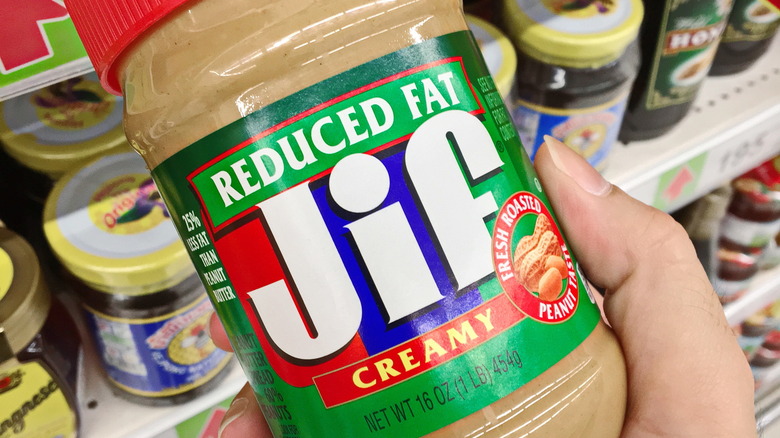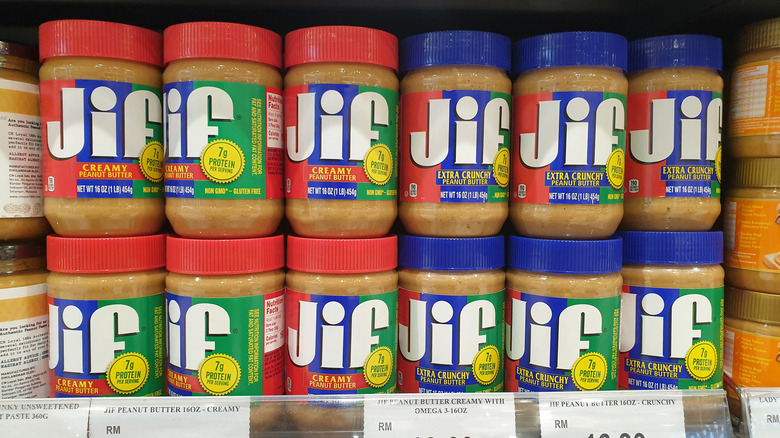Why Reduced Fat Jif Can't Strictly Be Labeled Peanut Butter
Gone are the days when choosing between creamy and crunchy peanut butter was the only decision at stake. Now, we have natural, organic, honey nut, roasted, powdered, chunky, salted or unsalted, and reduced fat peanut butters to consider — and that's just a partial list. While the meaning behind some of these labels can be on the murky side, the reduced fat option is straightforward enough. Indeed, Jif's reduced-fat spread has 25% less fat, or 12 grams of fat, compared to the 16 grams in its classic creamy version.
But there is another key difference between these two products. When you compare jars, you'll notice that the regular variety is called "Creamy Peanut Butter," while the reduced fat option is labeled "Reduced Fat Creamy Peanut Butter Spread, 60% Peanuts."
Why all the detail on the latter? It turns out, according to federal regulations, Jif's reduced fat variety can't technically be called peanut butter.
Reduced fat Jif doesn't meet the FDA's definition for peanut butter
It turns out the Food and Drug Administration (FDA) has a very precise definition of what constitutes peanut butter and, therefore, what can bear the label. The Code of Federal Regulations states that peanut butter must include shelled and roasted peanuts and can include "safe and suitable seasoning and stabilizing ingredients." However, these additives cannot "in the aggregate exceed 10 percent of the weight of the finished food," meaning its composition needs to be 90% peanuts to be considered peanut butter.
Since, as listed on the label, reduced fat Jif is only 60% peanuts, it's labeled as "peanut butter spread" rather than simply peanut butter. Typically the fat in peanut butter comes from the peanuts themselves, so to cut the fat in peanut butter, you have to reduce the peanut content in the spread. What fills up the rest of the jar is a combination of corn syrup solids and pea protein.
Jif's reduced fat PB spread has less fat than its regular peanut butter, but it also has one more gram of sugar per serving, 50 milligrams of additional sodium, and a longer ingredient list. Only you can decide which is better, but if you're after higher peanut content, you'll want to choose the regular, full-fat version.

